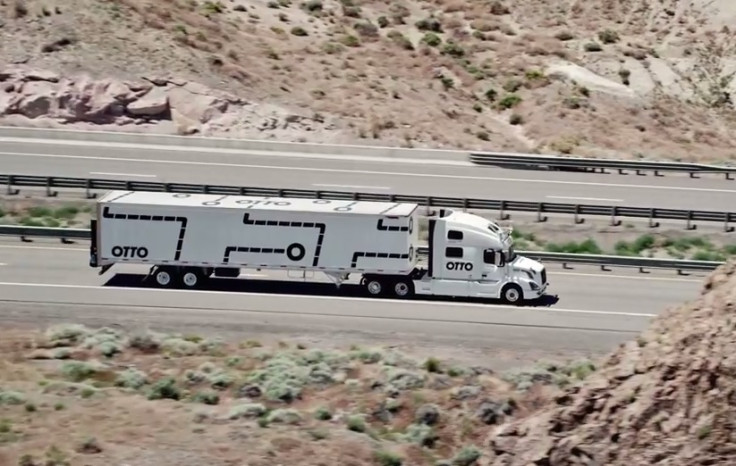Otto: Former Apple, Google and Tesla staff create autonomous truck company
Veterans of Google, Apple and Tesla have formed a new company to produce fleets of autonomous trucks. The firm takes regular trucks and fits them with self-driving technology, and is now hoping it can persuade regulators to let them operate across US roads nationwide.
Otto says the $30,000 (£20,000) equipment it fits to the trucks is a "small fraction" of the vehicle's original price of between $100,000 and $300,000, and while Google is focused on bringing autonomous cars to residential streets, Otto wants to automate the motorways where trucks spend the majority of their time.
Otto is led by Anthony Levandowski, who used to work in the Streetview and mapping divisions of Google, and Lior Ron, former project leader at Google Maps. Having launched in January, the company has poached its 40-employee workforce from some of the biggest names in Silicon Valley.
Similar to the Autopilot system offered by Tesla, the Otto trucks stay in their lane and keep a safe distance behind the vehicle in front. They maintain a set speed, but can also slow down and stop, then set off again when the traffic moves forward. Good news to anyone who often gets stuck behind slowly overtaking trucks, the Otto vehicles will always stay in the same lane to help traffic flow more freely.
The system includes cameras, radar and lidar sensors, all common accessories found on a range of autonomous vehicles, plus a custom computer loaded with algorithms to make sure the vehicle can react to any situation.

The company joins Daimler, Volvo and others who are all working to create autonomous trucks capable of hauling goods over long distances and with very little human involvement. A test video published by Otto shows how its modified Freightliner truck can drive itself, but as per California law a human has to be in the vehicle at all times – not necessarily behind the wheel, but on hand to intervene if anything goes wrong.
An onboard mapping database also helps the truck find a safe place to stop if the driver doesn't respond to the computer asking for help. If the Otto truck encounters a situation which it doesn't know how to deal with; it will ask the driver to take control, but if they do not respond then it will check its surroundings and cross-reference this to the mapping data to find a safe place to pull over. This is a more advanced system than Tesla Autopilot, which stops and puts the hazard lights on, blocking the lane.
The benefits of Otto's system are two-fold. One is increased safety as it is predicted that the completed system will be less likely to make mistakes than human drivers, and the second is an increase in productivity. If laws are altered to recognise the decrease in work and concentration needed by the driver, then the number of hours they can drive at a time might well be increased.
© Copyright IBTimes 2025. All rights reserved.






















